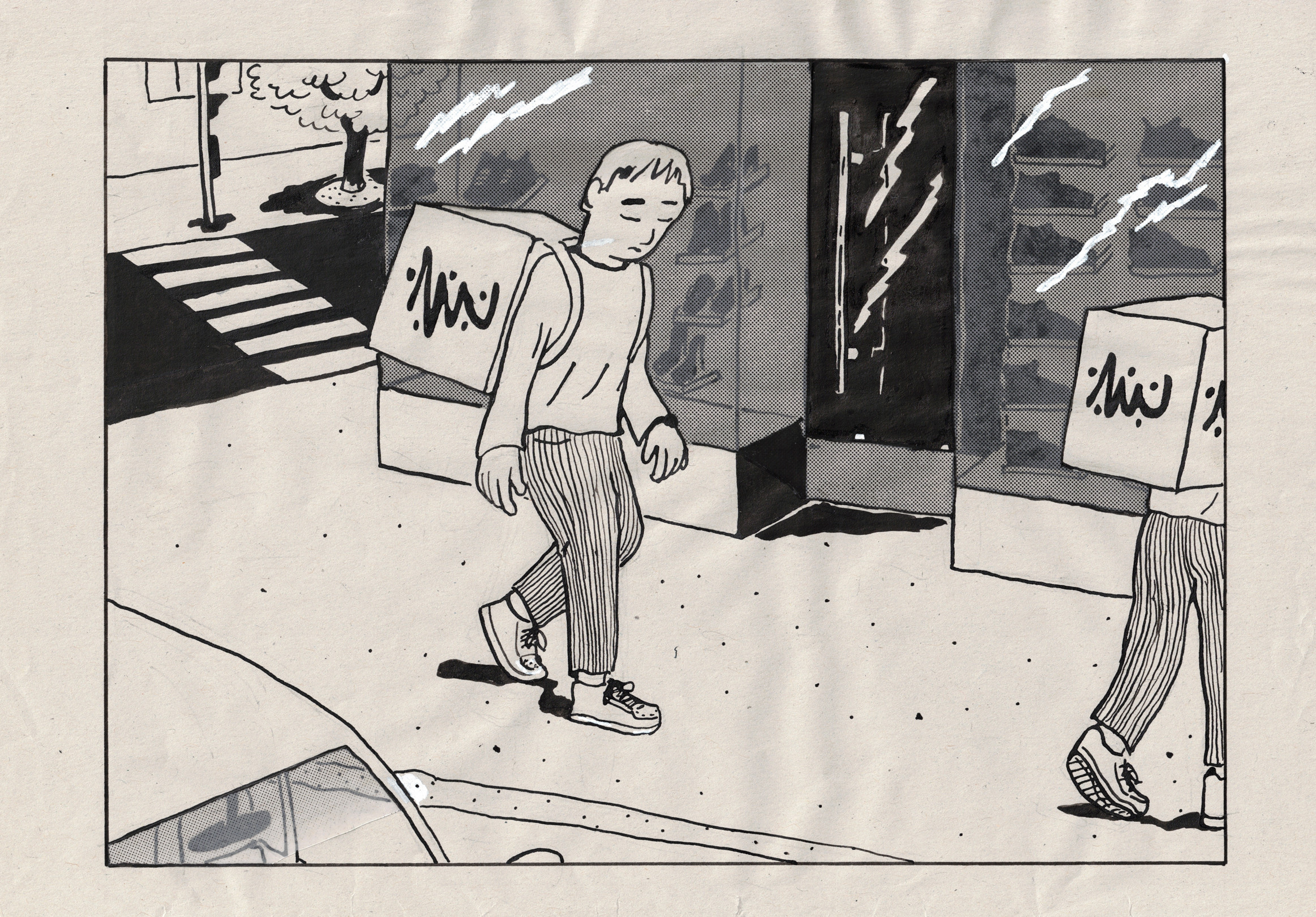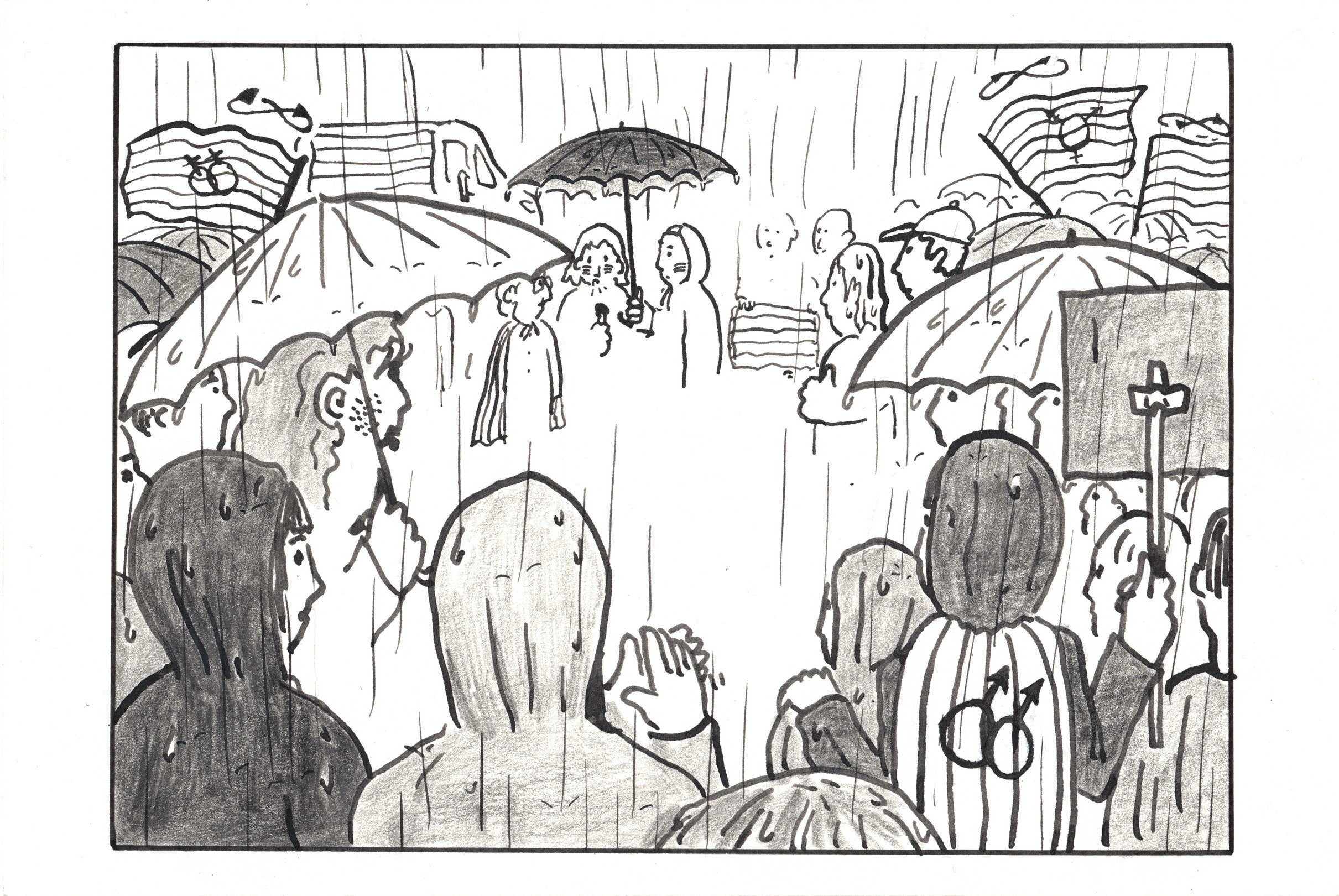Michal Rejzek↓
Gallery
Studies
| 2020–2022 | Painting 1, AVU (Robert Šalanda, Lukáš Machalický) |
| 2018–2019 | Painting 4, AVU (Marek Meduna, Petr Dub) |
| 2017 | stáž FAVU v Brně, Malba 2 (Luděk Rathouský) |
| 2015–2016 | Painting 1, AVU (Jiří Sopko) |
About the work
The Last Days on Earth
Our very last days on Earth take place in our heads. In an inward projection room that usually screens just a second before we die. My point of departure is precisely the mythical moment when your entire life unfolds before your eyes like a film as you depart. I believe it is true. I experience something like this every time I am stressed and in panic. It evokes scenes related to a stressful situation, moments that I have not long recalled. But it is not a typical chronological film; instead, it is edited retrospectively, associatively. The images form a whole on the basis of various relations, ties, and unlikely contexts.
My diploma work consists of a series of small-dimensional black-andwhite drawings that represent specific moments from a young person’s life with all of its sorrows and joys. A little bit from the childhood, a little bit from puberty, a little bit from adulthood. The school, the misery; the temporary and other jobs, the misery again. The friendships, the joys, and love.
The framework I’ve chosen for the sequence of the individual drawings is a year and its four seasons – from winter to winter. Weather conditions and temperatures alternate, bringing specific situations and experiences. A pouring rain at a demonstration may be bothersome but, on the other hand, it eventually intensifies the heavy atmosphere of why we are here. Kissing a lover under a blossoming cherry tree may be a cliché, but it is so nice that we all secretly crave it. Or don’t we?
I would like my work to express various today’s issues that I find important and worth noting. Everyday fleeting moments as well as the hardly translatable atmosphere charged with anxiety and tears. Because the millennials, let alone the Z generation, are perhaps the most pessimistic generations in a long time.
My sources of inspiration include films, especially documentaries featuring edited archive documents, but also anime and skate videos. It is, for instance, the films by Šimon Šafránek and Šimon Hájek (Meky, King Skate, Rapstory). I think that such a “pre-mortem” film could be exactly like the works by the above-mentioned filmmakers. Another important source to me is my favorite Špáta’s “inquiry” film The Greatest Wish from the liberated 1960s, in which the author asks young people about their greatest wishes, life expectations, and views on the contemporary society. And today, too, we shall ask, “So what are ours?”


